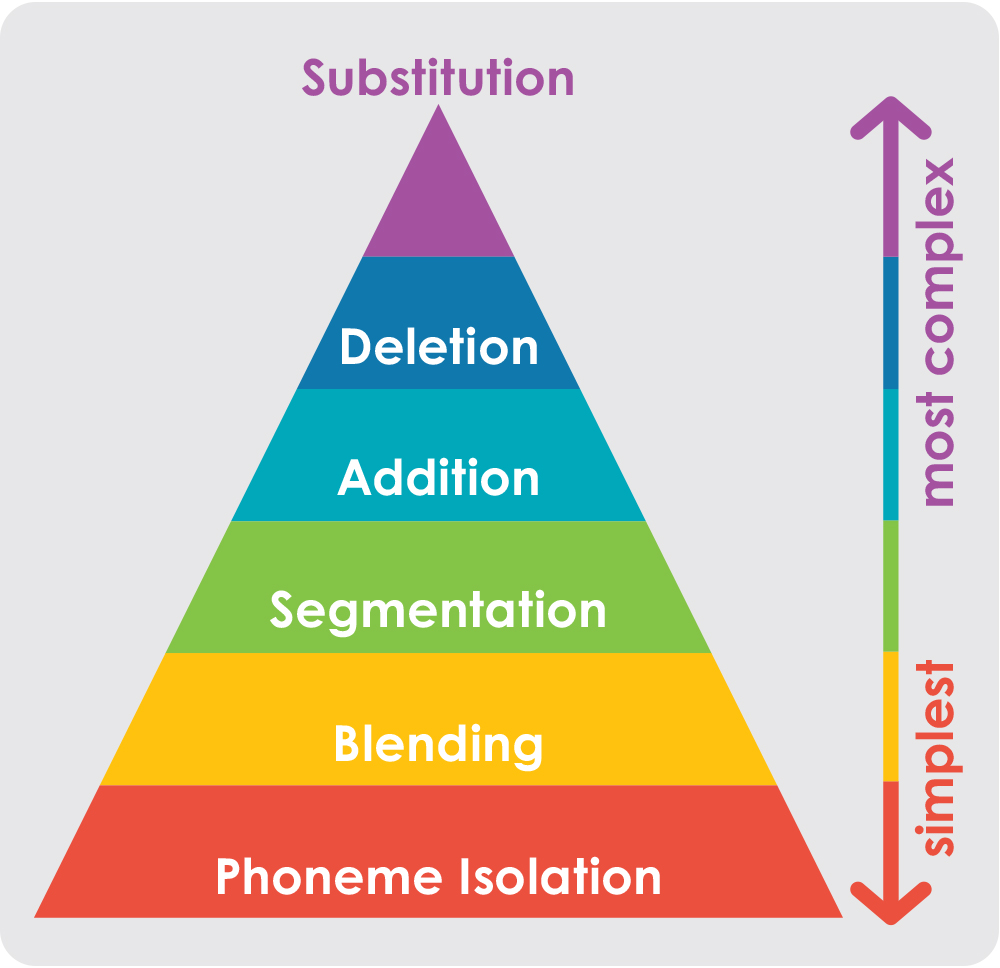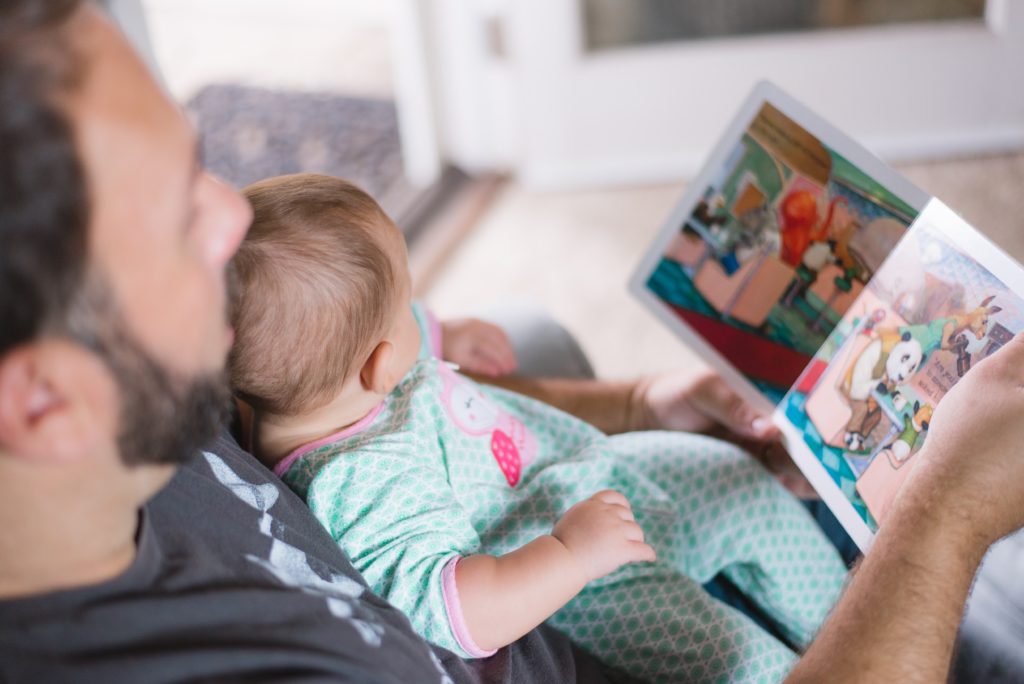This is the final post in a literacy series that I have been working on leading up to the release of my Hallow-Reading board game. If you haven’t read the previous posts yet and would like to check them out, feel free to click on the links below:
The previous posts have focused on various aspects of phonological awareness, or the ability to manipulate elements of spoken language (i.e., rhymes, syllables, and blending/segmenting words.)
In this post, we are going to explore phonemic awareness and how identifying sounds in words ties in with literacy. If you’d like to jump to some tips, go ahead to Let’s Water the Sponge!
What is Phonemic Awareness?
As I mentioned previously, there are many facets involved in phonological awareness, and phonemic awareness is the most complex facet within phonological awareness.
Phonemic Awareness is the ability to hear, understand, and manipulate spoken sounds within a word. Think of phonemic awareness as a magnified view of words.
What would you see if you put a word under a magnifying glass? A whole bunch of phonemes, or sounds. Now that these phonemes are enlarged and visible, can you play around with them? Break them apart? Put them together? Swap them out? Add new ones?
There are 44 phonemes in American English. There are more phonemes than there are letters because sometimes letters can be pronounced more than one way and other times letters come together to make a new sound (e.g., oi, ai, ng).
As with phonological awareness, there are various components of phonemic awareness. Some concepts are easier to grasp, while others are more complex. Phoneme isolation is typically the easiest, which is what we will address in this post. Building on that is blending phonemes, segmenting words into phonemes, adding phonemes, deleting phonemes, and substituting phonemes. These are all topics that will be saved for future posts.
I absolutely love the visual below! I pulled it from the Really Great Reading blog and it summarizes phonemic awareness concisely.
How Does Phonemic Awareness Impact Literacy?
Having the ability to identify and manipulate phonemes is arguably the most important part of literacy development. Granted, there are still other parts of early literacy that are also critical.
Researchers discovered that when students struggled with early literacy and were given explicit instruction in phonemic awareness that their ability to decode words improved. Whereas students who struggled with early literacy and were not given explicit instruction did not improve in their ability to decode words. Furthermore, this instruction was maintained for a two-year-period and the group of students who were introduced to phonemic awareness generalized their ability to word recognition accuracy. If you’re interested in learning more about the research, check it out!
What does all of this mean? Essentially, phonemic awareness has a positive effect not just on early literacy, but the long-term ability to decode words. Children who focus on phonemic awareness are typically more successful at reading than peers who do not spend time learning about phonemic awareness.
If you stop and think about it, this makes perfect sense. The more you study a subject from various angles, the better understanding you have of it. More importantly though is the fact that phonological awareness and phonemic awareness are the building blocks to language, specifically literacy.
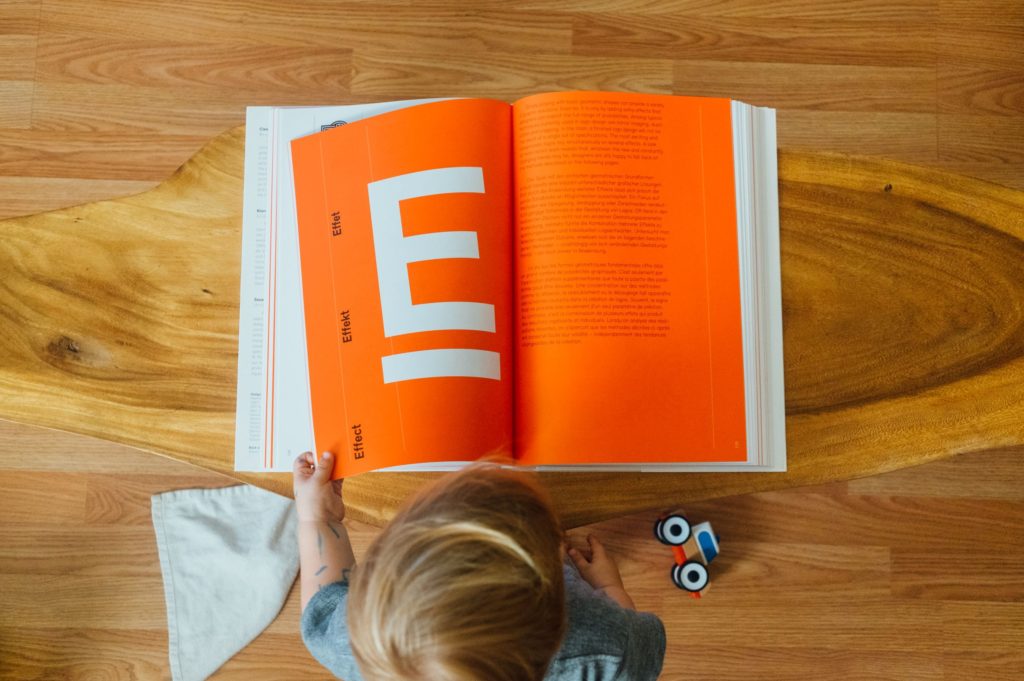
What is Sound Identification and When Should I Introduce it?
Sound identification is the ability to identify the sounds within a word. Oftentimes, children start by being able to identify the first sound in the word, then the last sound in the word, then the middle sounds.
For instance, if you said, “What sound does apple begin with?” a child who is beginning to master his phonemic awareness skills might answer correctly with “ah”, while a child who knows letters but not sounds might answer by saying the letter “a” instead of the short “ah” sound.
If this concept is one you haven’t yet introduced to your child yet, go ahead and get started! You can play a game where you brainstorm words that start with sounds. Apple, Astronaut, Ankle, Ant, for example. Just throw words out there when you’re talking. “Apple starts with the /a/ sound. What else starts with the /a/ sound?” Then, just list the words that pop into your head (well, the civil ones at least, haha!)

Personally, I talked to my children like this on occasion when they were teeny babies and couldn’t say anything yet. Remember, their little minds are sponges and absorbing everything around them! Don’t worry if you didn’t do this! It certainly is not too late to begin talking to your child in this manner – feel free to give it a whirl.
When can you expect children to identify the first sound in words? Somewhere between 4-5 years old, but it could happen a little sooner than that. If this skill hasn’t developed by age 6, then your child might need to focus more on building up his phonemic awareness skills so that he doesn’t fall behind in reading.
Let’s Water the Sponge!
Tips on How to Introduce Sound Identification
- One idea is to pick a different sound to target each week as sound identification is a skill that can be introduced early and often.
As you’re speaking with your child throughout the day, pause every so often and say, “Did you hear that? You said truck, which starts with the /t/ sound. We’ve been learning about the /t/ sound this week!” You can then either encourage your child and help her brainstorm additional words that start with the /t/ sound, or you can drop the subject and continue your conversation. - Another tactic is to use visuals. Write the word down on a piece of paper or whiteboard in order to reinforce the letter/sound association and get them used to spelling. Don’t be afraid to use visuals from an early age! For many children, this additional input, beyond just auditory input, will be incredibly useful. The information will likely stick in their minds better.
So, what does this look like? You can write down the sound you’re working on for the week, such as “T/t” as mentioned above, and then write down a word that starts or ends with the /t/ sound. If you’re using paper, you can continue writing a list of words and underline the “t’s”, but if you’re using a whiteboard then you can choose between creating a word list or just erasing each word as you go.

- Use Blocks, Legos, or colorful beads. I know I’ve mentioned this in my last couple of posts, but colorful blocks will not only add a visual component to words but a tactile component as well. It will give children a tool to manipulate so that they can better understand words and how they fit together.
For instance, the word “truck” has four sounds, but five letters in it. Use the blocks to represent the sounds, NOT the letters (this is very important!) If you’re trying to build phonemic awareness, then it is imperative to focus on the sounds that are involved in the word.
Lay out the blocks (or beads or Legos) in front of your child and tell him, “We’re going to start thinking about the sounds that go into words. In the word ‘truck’, there are four sounds.” (Proceed to lay out four different colored blocks and say “t-r-u-ck.”) Finally, ask your child, “What is the first sound in the word ‘truck’?”
See the example below.
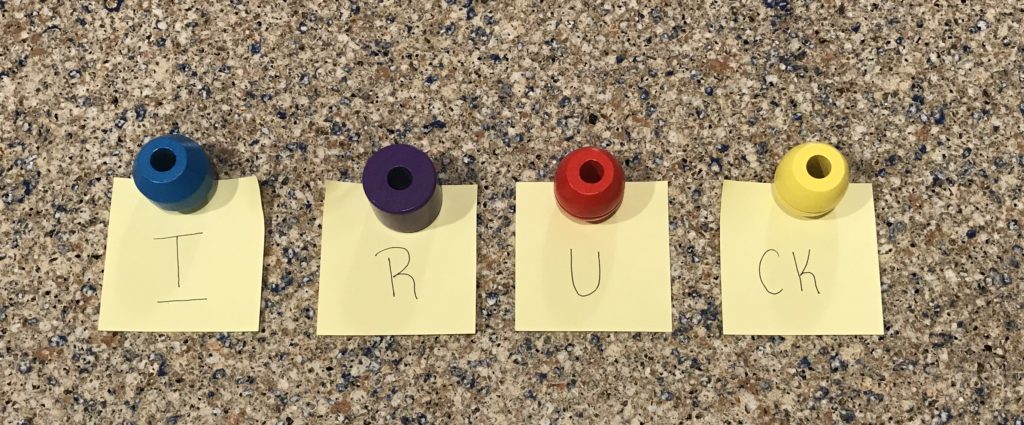
Activity Idea #1 – Mealtime
Personally, I have found mealtime to be a simple and natural way to integrate language. The fact that it is a natural way to integrate language may not seem like much at first glance, but when it comes to speech and language skills, a child has not necessarily mastered a skill until he or she can demonstrate it across all environments.
During the meal, you can try to talk about sounds during the conversation, as I mentioned earlier. Something that can add a bit more pizzaz to sound identification would be to talk about the foods you are eating and which foods have the sound that you are working on and which foods do not have the sound you are working on.
Depending on where your child falls on the spectrum of phonemic awareness, you can have him think about just initial sounds, just final sounds, just sounds in the middle, or perhaps the sound can occur anywhere in the word.
Now, usually at our house, we don’t have toys at the table while eating. You can make this a fun activity for your child by bringing out the blocks/beads/Legos (if you have a little extra space) and talk about the sounds in each food item. This will give your child the opportunity to apply his phonemic awareness skills in a fun and different manner.

Activity Idea #2 – Read Aloud
If you’ve been following me for some time, then you’ll know that I am a HUGE fan of reading books to kids! I used to go to the library each week and have my kids pick out books to take home before Covid hit. It was one of the highlights of their week and something that we looked forward to doing together.
Since the libraries are closed in our area, I have taken to YouTube to search for new books for my boys. It isn’t the same as snuggling up with them, but the neat part is that I can just pause the video in order to explain the book in further detail, ask questions, or identify sounds.
What I’m saying is that you can get creative here. You can work on sound identification while curled up and reading with your child. You can casually ask him, “Do you see the word ‘witch‘ on this page? What is the last sound in that word?” See if the visual of having the word in front of your child helps him correctly identify the target sound. If not, try sounding it out for him, “w-i-tch. What was the last sound you heard in the word?” If your child is still having trouble, go ahead and tell him the answer. The last thing that you want is for your child to become frustrated and shut down whenever you try to cycle in phonemic awareness tasks.
Feel free to repeat this as many times as you’d like throughout reading the book. You can experiment with having your child identify first sounds, last sounds, or sounds that occur in the middle of words. Again, follow your child’s lead so that he doesn’t get bored with the task.
Activity Idea #3 – Scavenger Hunt
One final activity that you can do is send your child on a scavenger hunt in your home. Give her a large basket (I have even used a pitcher for this task) and ask her to find one of the following:
1) Five favorite items
2) Five things that are round
3) Five things that are green
4) Five items that have the “a” sound in it, or any other sound in it
Once she has collected the items, dump them out on the floor, and go through her treasures. Ask her to help you name all of the different objects, then ask her to help identify the sounds in the objects.
For example, if her task was to bring you five things that are round and she brought a ball, a pretend plate, a ring, a circle, and a book. Then you can go through and talk about the initial sound in each item (/b/, /p/, /r/, /s/, and /b/). Then, show her that both ball and book start with the same sound and the other objects begin with different sounds.
Final Thoughts
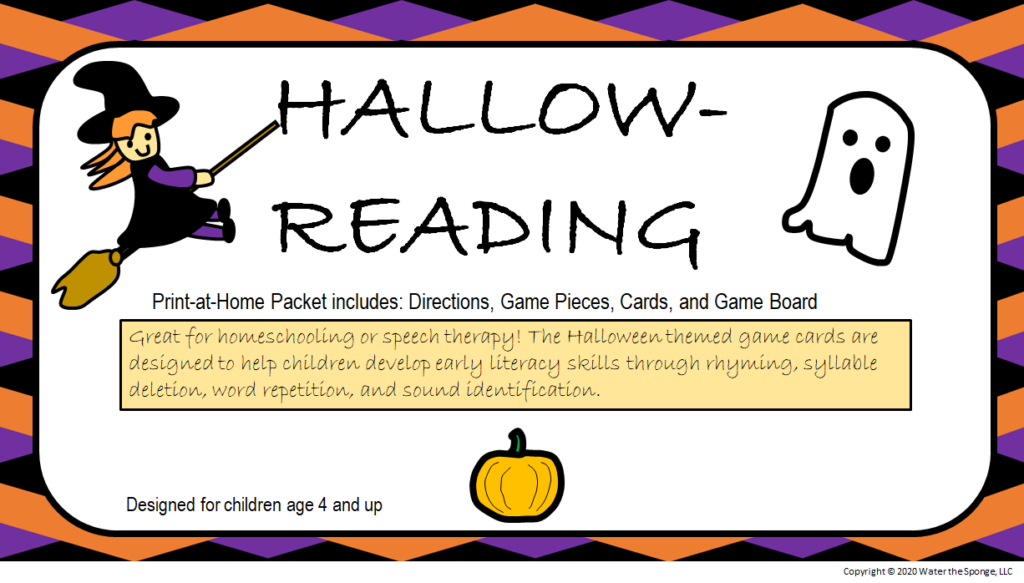
I encourage you to purchase the game above to improve your little one’s early literacy skills! The target age range is 4 years and older.
As always, I hope that you found this information useful! Please feel free to send me a message, comment, or question regarding anything in this post that you tried at home.



